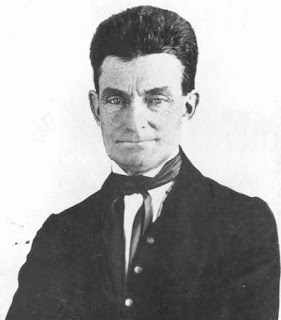 | ||
| A young Nathaniel P. Banks |
 |
| John Brown |
Virginia and Maryland as a case study:
Slavery and Secession.
Virginia Maryland
Population 1,596,318 687,049
Slave Population 490,865 (31%) 87,189 (12%)
Slaveholders 52,128 (4.7%) 13,783 (2.3%)**
** note that these figures are deceptively small because only heads of households were slaveholders.
There is a fundamental question about the beginning of the war, and that is at what point does war become inevitable. We'll spend some time looking at the secession crisis and the efforts of some to avert bloodshed.
Why would Lincoln wish to scuttle the Crittenden Compromise? What were some of the factors in his decision? Was it a good one. Oh, and by the way, John J. Crittenden was a really interesting guy and a true patriot.
The bombardment of Fort Sumter precipitated a sort of hysteria that accelerated the march toward war, whether it was the subsequent secession of Virginia or the rage militaire described by James McPherson that took root in communities, North and South, all over the divided nation.
Here is an interesting page with links to images of Fort Sumter AND a live webcam of Fort Sumter. There is another web page promising a "pan and zoom webcam" of Charleston harbor, which would be really awesome if it actually worked!
On the eve of war, the North clearly possessed important material and demographic advantages over the South, but one must remember that the definition of very different for the two opposing sides. It is important to keep these competing definitions in mind when considering big-picture strategies and outcomes.
The war that most Americans envisioned in May, 1861 was based on notions that had become obsolete. Even among those who appreciated the potential for the coming war's devastation would probably have had a hard time imagining just how fundamental the war would reorder American institutions like the way we as a nation fight a war. By the Christmas of 1861, Americans were only beginning to understand the magnitude of what was afoot.
No comments:
Post a Comment